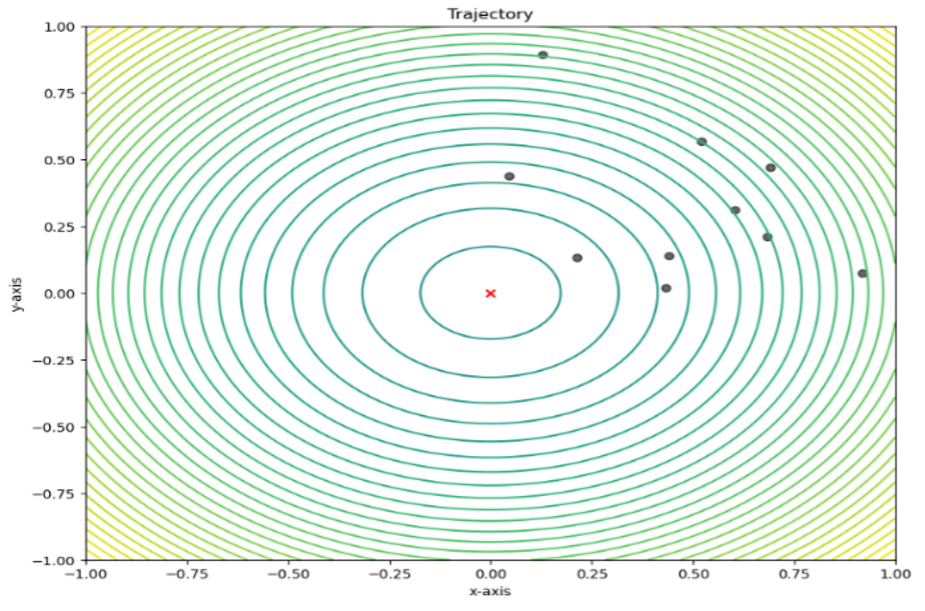APPLICATION OF PSO-LSSVM IN PREDICTION AND ANALYSIS OF SLOW DRILLING (RATE OF PENETRATION)
Abstract
.
Full text article
References
Balaji, K., Rabiei, M., Suicmez, V., Canbaz, C. H., Agharzeyva, Z., Tek, S., Bulut, U., & Temizel, C. (2018, June 11). Status of Data-Driven Methods and their Applications in Oil and Gas Industry. The SPE Europec Featured at 80th EAGE Conference and Exhibition. https://doi.org/10.2118/190812-MS
Bizhani, M., & Kuru, E. (2022). Towards drilling rate of penetration prediction: Bayesian neural networks for uncertainty quantification. Journal of Petroleum Science and Engineering, 219(September), 111068. https://doi.org/10.1016/j.petrol.2022.111068
Bodaghi, A., Ansari, H. R., & Gholami, M. (2015). Optimized support vector regression for drilling rate of penetration estimation. Open Geosciences, 7(1), 870–879. https://doi.org/10.1515/geo-2015-0054
Elkatatny, S. (2018). New Approach to Optimize the Rate of Penetration Using Artificial Neural Network. Arabian Journal for Science and Engineering, 43(11), 6297–6304. https://doi.org/10.1007/s13369-017-3022-0
Elkatatny, S., Al-Abduljabbar, A., & Abdelgawad, K. (2020). A new model for predicting rate of penetration using an artificial neural network. Sensors (Switzerland), 20(7). https://doi.org/10.3390/s20072058
Hossain, M. E., & Al‐Majed, A. A. (2015). Fundamentals of Sustainable Drilling Engineering. Wiley. https://doi.org/10.1002/9781119100300
HOSSAIN, M.E., ISLAM. M. R. (2018). Drilling Engineering Problems and Solution. 627.
Ji, H., Lou, Y., Cheng, S., Xie, Z., & Zhu, L. (2023). An Advanced Long Short-Term Memory ( LSTM ) Neural Network Method for Predicting Rate of Penetration ( ROP ). https://doi.org/10.1021/acsomega.2c06308
Pandey, Y. N., Rastogi, A., Kainkaryam, S., Bhattacharya, S., & Saputelli, L. (2020). Toward Oil and Gas 4.0. In Machine Learning in the Oil and Gas Industry (pp. 1–40). Apress. https://doi.org/10.1007/978-1-4842-6094-4_1
Riazi, M., Mehrjoo, H., Nakhaei, R., Jalalifar, H., Shateri, M., Riazi, M., Ostadhassan, M., & Hemmati-Sarapardeh, A. (2022). Modelling rate of penetration in drilling operations using RBF, MLP, LSSVM, and DT models. Scientific Reports, 12(1), 1–24. https://doi.org/10.1038/s41598-022-14710-z
S, A. A., Elkatatny, S., Ali, A. Z., & Mahmoud, M. (2019). IPTC-19548-MS Rate of Penetration Prediction in Shale Formation Using Fuzzy Logic Fuzzy Logic ( FL ).
Shah, M., Kshirsagar, A., & Panchal, J. (n.d.). Applications of Artificial Intelligence (AI) and Machine Learning (ML) in the Petroleum Industry.
Sobhi, I., Dobbi, A., & Hachana, O. (2022a). Prediction and analysis of penetration rate in drilling operation using deterministic and metaheuristic optimization methods. Journal of Petroleum Exploration and Production Technology, 12(5), 1341–1352. https://doi.org/10.1007/s13202-021-01394-w
Sobhi, I., Dobbi, A., & Hachana, O. (2022b). Prediction and analysis of penetration rate in drilling operation using deterministic and metaheuristic optimization methods. Journal of Petroleum Exploration and Production Technology, 12(5), 1341–1352. https://doi.org/10.1007/s13202-021-01394-w
Authors
Copyright (c) 2023 Geovanny Branchiny Imasuly, Wilma Latuny, Robert Hutagalung

This work is licensed under a Creative Commons Attribution-ShareAlike 4.0 International License.
This is an open access journal which means that all content is freely available without charge to the user or his/her institution. The copyright in the text of individual articles (including research articles, opinion articles, and abstracts) is the property of their respective authors, subject to a Creative Commons CC-BY-SA licence granted to all others. JEEE allows the author(s) to hold the copyright without restrictions and allows the author to retain publishing rights without restrictions.




